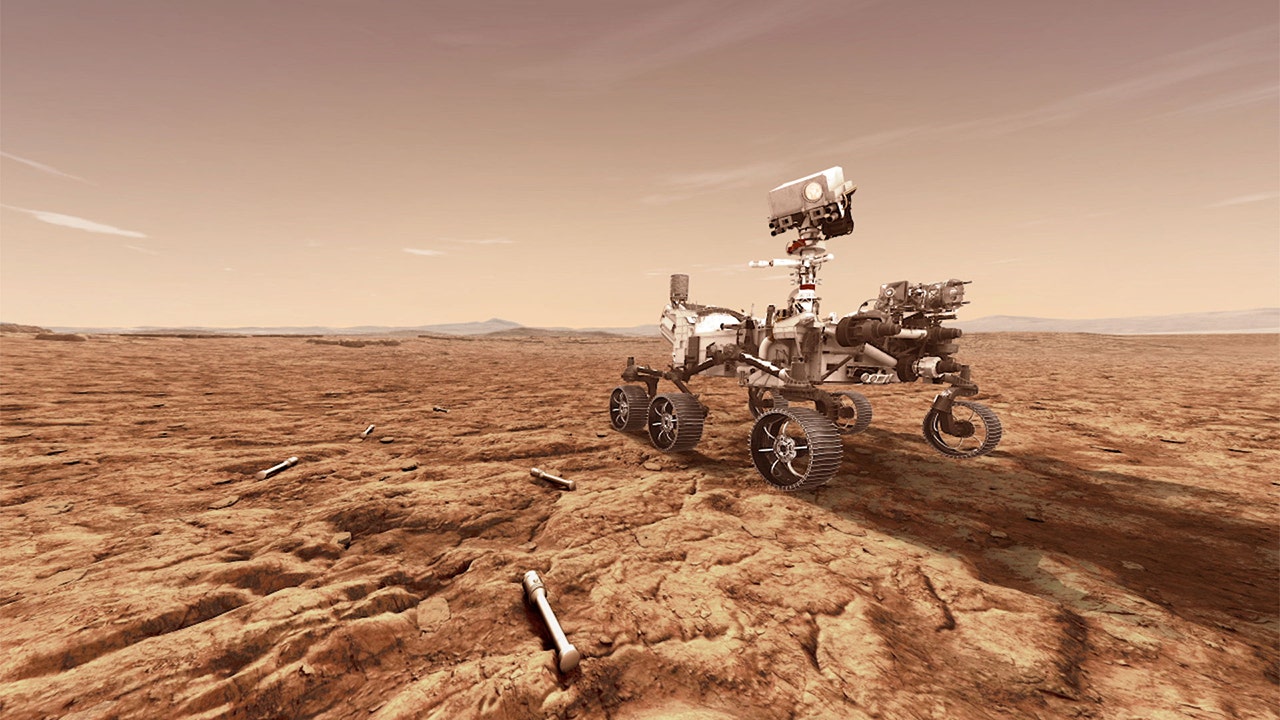NASA’s Perseverance rover, currently exploring the surface of Mars, has made a potentially exciting discovery: a shiny, metallic rock that scientists believe could be a meteorite originating from an ancient asteroid. This unexpected find provides new insights into the history of Mars and the cosmic materials that have interacted with its surface over millions of years.
The rock, nicknamed "Phippsaksla," caught the attention of NASA’s mission team due to its distinctive appearance. Unlike the surrounding flat and broken Martian terrain, Phippsaksla stood out as a shiny, metallic object perched on bedrock shaped by ancient impacts just beyond the rim of Jezero crater. Intrigued by its unusual look, scientists decided to investigate the rock more closely using the rover’s advanced scientific instruments.
One key tool used to analyze Phippsaksla was Perseverance’s SuperCam, an instrument mounted atop the rover’s mast. SuperCam employs a laser that vaporizes tiny bits of material from a distance, allowing onboard sensors to determine the chemical composition of the target. When scientists aimed SuperCam at Phippsaksla, the readings revealed unusually high levels of iron and nickel. This combination is significant because these two elements are typically found together only in meteorites that formed deep inside ancient asteroids, rather than in native Martian rocks.
The discovery of a meteorite on Mars is not unprecedented. Previous rover missions — including Curiosity, Opportunity, and Spirit — have all identified iron-nickel meteorites scattered across Mars’ surface. For example, Curiosity found meteorites nicknamed "Lebanon" and "Cacao," while Opportunity and Spirit also spotted metallic fragments during their explorations. However, Perseverance had not encountered such a metallic rock until now, making Phippsaksla a notable addition to the catalog of extraterrestrial visitors confirmed on Mars.
If further analysis confirms that Phippsaksla is indeed a meteorite, it would add valuable data to our understanding of how meteorites interact with Mars’ environment over time. The rock’s position atop impact-formed bedrock near Jezero crater could provide clues about how it arrived there, how long it has been exposed to Martian weathering processes, and how cosmic debris is distributed across the planet’s surface.
The implications of this discovery extend beyond planetary geology. Meteorites are remnants of asteroids and other celestial bodies that date back to the early solar system. Studying them on Mars offers a unique opportunity to learn about the composition and history of these ancient objects in an environment very different from Earth’s. This could help scientists better understand the origins of the solar system and the processes that shaped the planets.
Perseverance itself is NASA’s most advanced rover to date, designed not only to explore the Martian surface but also to search for signs of ancient microbial life. It launched from Cape Canaveral Space Station in Florida on July 30, 2020, aboard a United Launch Alliance Atlas V rocket, traveling 293 million miles before safely landing in Jezero crater on February 18, 2021. Since then, the rover has been conducting scientific investigations, collecting rock and soil samples, and sending valuable data back to Earth.
The rover is a technological marvel, measuring about 10 feet long, 9 feet wide, and 7 feet tall, and weighing roughly 2,260 pounds — making it heavier than its predecessor, Curiosity, by about 278 pounds. It is powered by a plutonium generator that provides a reliable source of energy for its suite of instruments. Perseverance carries seven scientific instruments, including the SuperCam laser, a seven-foot robotic arm, and a rock drill capable of collecting samples that may one day be returned to Earth for detailed study.
Beyond advancing scientific knowledge, the Perseverance mission is also a critical step toward future human exploration of Mars. NASA aims to send astronauts to the red planet in the 2030s, and the data collected by Perseverance will help inform the technologies and strategies needed to make that goal a reality.
The discovery of Phippsaksla is a reminder that Mars still holds many surprises. Even on a planet located some 140 million miles away, unexpected findings can emerge from the dust, shedding light on the complex history of our solar system and fueling our curiosity about the universe.
As NASA’s team continues to analyze the rock’s composition and origin, the scientific community eagerly awaits confirmation of Phippsaksla

